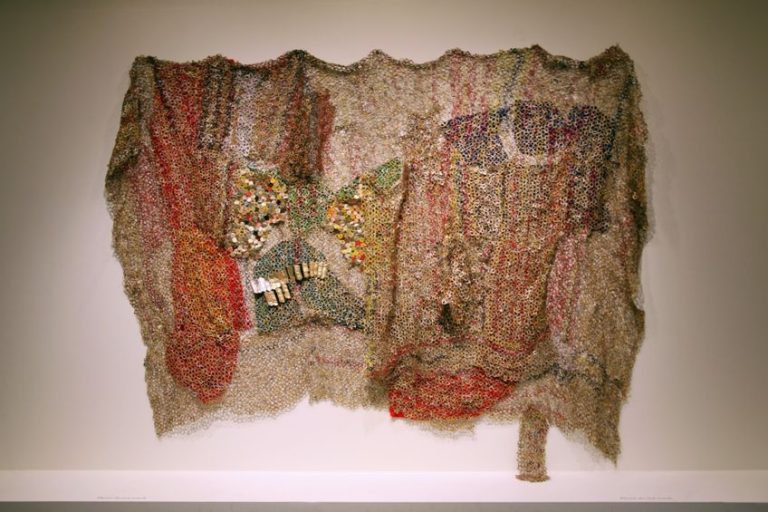Subject Matter in Art – A Guide to Decoding an Artwork
What is subject matter in art, and how is it recognized? Interpreting art requires the willingness to closely observe an artwork and to question every aspect of it. To understand what the subject matter is in a work of art, we first need to identify the work’s focal point or topic. Common examples of subject matter include landscapes, still life scenes, portraits of people, animals, and so on. Below, we will be taking an in-depth look at the various types of subject matter in art, so that you may have a clearer understanding of how to view artwork, as well as discover which types of subject matter you would like to use in your own art.
What Is Subject Matter in Art?
Every artist imagines how their work will be interpreted. Perhaps they have a specific set of ideas or emotions that they want to convey through their particular choice of subject matter. Depending on the art piece, the intent of the creator may be readily apparent and obvious, or it could be more difficult to determine. This can be especially true for abstract art representing a certain theoretical concept. It is up to you as a viewer of the artwork to thoroughly evaluate and analyze it in order to develop a personal interpretation of what the subject matter is.
For every work of art that you come across, you need to consider what the artist may have intended for you to think, feel, or experience when viewing or interacting with the work they created.
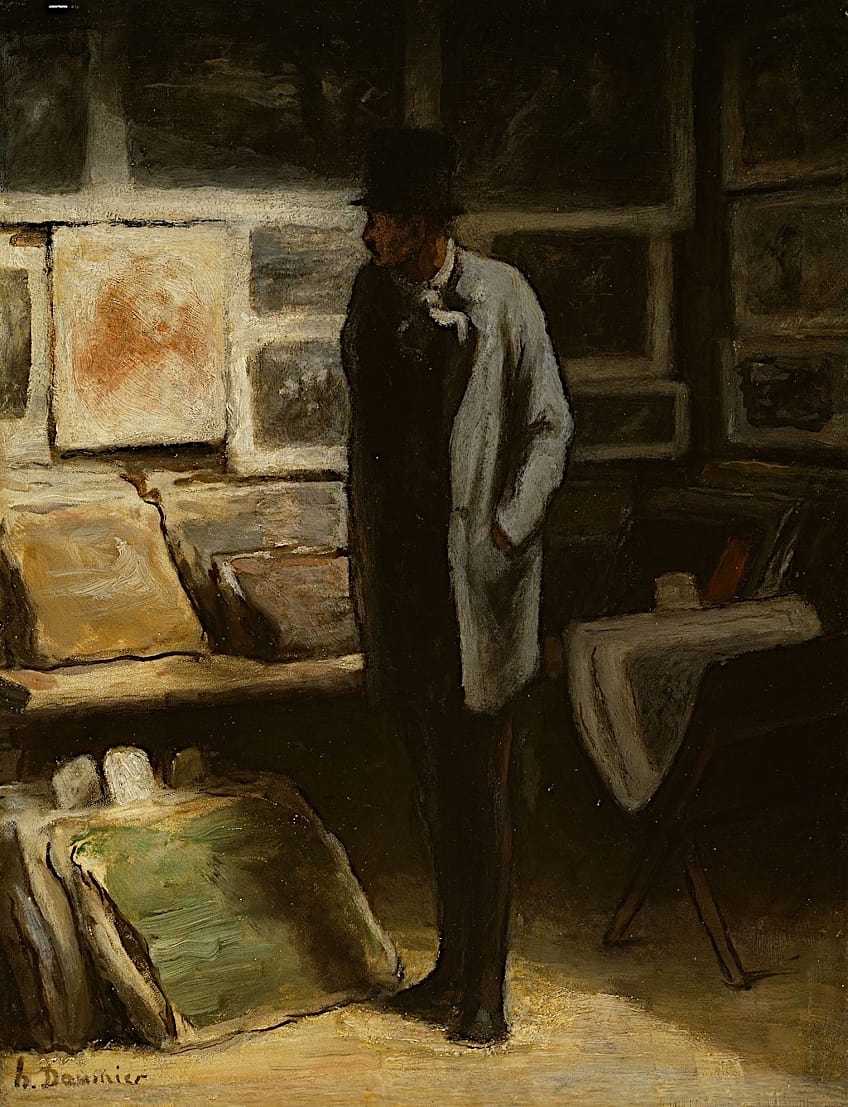
With abstract art, or art that lacks a clearly identifiable subject matter, different individuals can put forward various diverse explanations for what the subject matter of the art truly is. Regardless of the variation of opinions, all of them are regarded as valid, as there is no one particular way to view such artworks. The aim of the artist is to encourage the viewer to closely observe and consider the various facets of the artwork in order to interpret it. It’s fascinating how we can all observe the very same artwork and have multiple interpretations of it. Life would actually be very dull if we all held the same views on everything.
There are instances when the subject matter is apparent. Sure, you might argue that the subject matter of a dog drawing is actually a cat, but it’s unlikely that a lot of people would agree with you on that point – unless perhaps it’s a very bad drawing.
The Function of Subject Matter in Art
What role does the subject matter play in art? Well, as we shall see, it serves multiple functions in art. These include the expression of ideas and emotions, the enhancement of communication, and the portrayal of the perception and view of the artist. Below, we shall explore these various functions of subject matter in art in greater detail.
The Expression of Ideas and Emotions
The subject matter of art is essential in conveying the artist’s feelings and thoughts. Artists typically utilize their chosen subject matter to express their thoughts, emotions, and experiences.

The subject matter, whether it’s a portrait, a landscape, an abstract idea, or a societal issue, becomes a visual expression of the artist’s unique emotions and ideas.
Artists can stir up certain emotions as well as provoke intellectual reactions from audiences through their skillful use of color, shape, composition, and other artistic fundamentals. It enables individuals to convey their distinct vision, share what drives them, and emotionally and intellectually engage the audience.
Using Subject Matter to Enhance Communication
Subject matter is also important in improving communication between the audience and the artist. Art has the ability to communicate across cultures and historical eras by breaking through linguistic barriers. Artists can convey storylines, concepts, and messages that appeal to a variety of people by choosing specific subject matter.
A historical artwork showing a noteworthy event, for instance, might teach the audience about events from the past that have played a formative role on their present, while an allegory is used to convey ideas in a symbolic format.
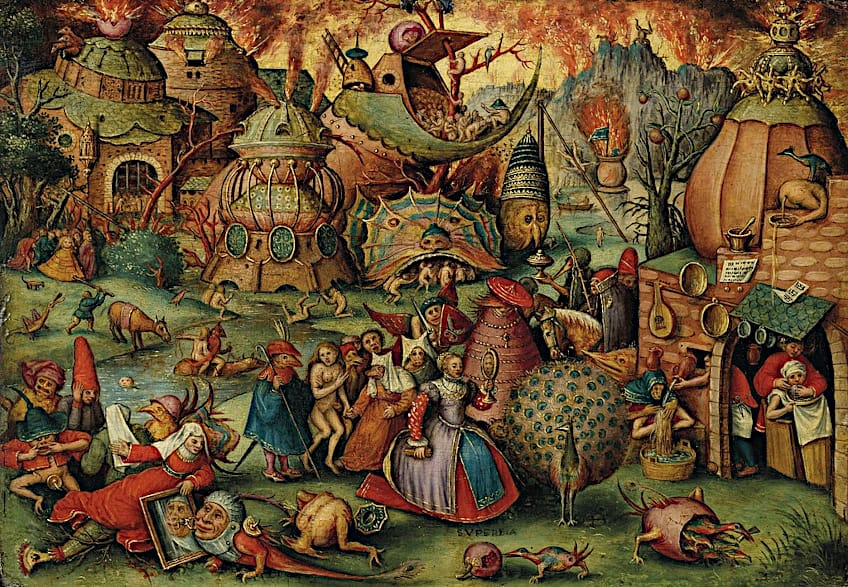
A portrait is able to capture an individual’s essence and portray their personality or even social standing. Similarly, non-representational subject matter in abstract art can elicit complex emotions as well as challenge the audience’s point of view. The subject matter functions as a visual language through which artists are able to communicate their ideas and connect with the audience. It offers a framework for interpretation and analysis, allowing for meaningful discourse and developing greater respect for the artist’s works.
Expressing the Worldview of the Artist
The subject matter of art often conveys the artist’s unique view of the world around them. Artists perceive and interpret their environment through their own personal lens of experience, and the subject matter they choose allows them to portray their subjective experiences and their unique points of view. Every artist sees and interprets the world in their own unique manner, shaped by their upbringing, cultural backgrounds, personal views, and experiences.

The subject matter an artist chooses becomes an outlet for conveying their unique point of view and providing insight into their worldview.
The subject matter serves as a medium for artists to exhibit their particular viewpoints, whether they choose to portray realistic settings, abstract concepts, or innovative creative ideas. It allows artists to achieve a primary goal of art, which is to encourage the viewer to perceive and consider a variety of thoughts, observations, critiques, and comments on society, nature, human relationships, and other aspects of life that may either reflect or differ from their own. Artists help create the variety and complexity of creative expression by exhibiting their distinct perspectives through their use of subject matter in art.
The Various Types of Subject Matter in Art
If you are unsure what kind of subject matter is best for your art, explore various kinds of art and notice what appeals to you. Once you’ve narrowed it down, produce a few pieces in that particular style and determine whether you’re drawn to it. You should also think about what subject matter is popular in your neighborhood or online.
However, don’t create art only for the sake of getting online “Likes”. It can be an absolutely soul-destroying exercise that can potentially get you labeled as a one-trick pony and leave you feeling restricted
Continue to keep practicing and exploring any subject matter you end up choosing, as the more you produce, the better the portrayal of your subject matter will become. Let’s examine the most popular types of subject matter in art below.
Still Lifes
Scenes featuring objects from everyday life have been found in ancient Roman frescoes and mosaics. These served purposes ranging from advertising dishes served in restaurants, to symbols of prosperity.
The still life as we know it dates from the 17th century where Dutch and Flemish painters in Northern Europe, and artists in Spain began to depict every-day objects as a means of displaying their mastery of painting various textures, forms, and plays of light.
Still life is a very popular subject matter in art that focuses on presenting inanimate objects in a carefully created environment. Flowers, food, fruit, cutlery, vases, books, and other common objects are only a few examples of what could potentially be included in the still-life arrangement. Still-life artworks, as opposed to other artworks that feature landscapes, people, or historical events, focus on the composition and portrayal of these various objects. All of the components are meticulously chosen and arranged by the artist to produce a visually pleasing and harmonious configuration.
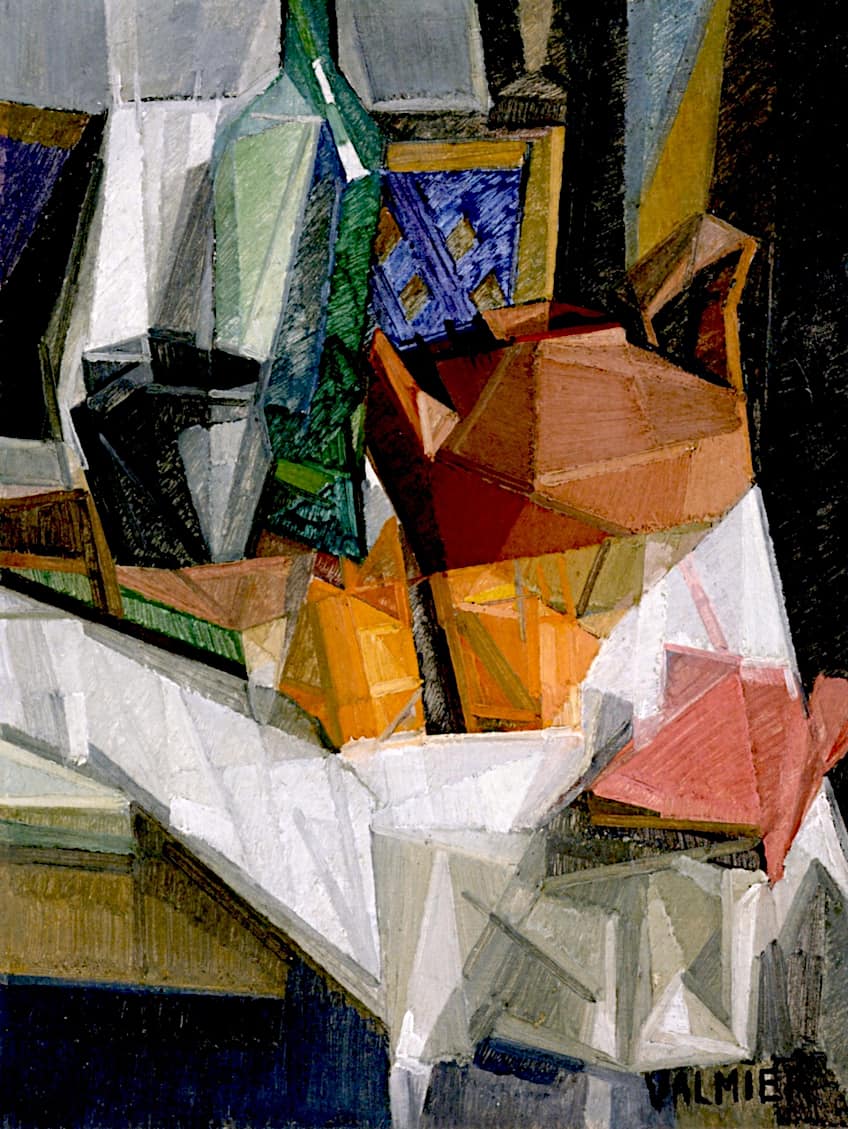
In some still life styles such as vanitas paintings, objects such as skull, rotten fruit, dead flowers, and so on, serve a symbolic purpose, representing ideas such as the brevity of life.
To create a feeling of aesthetic appeal, they also need to consider aspects such as color, lighting, texture, and the overall balance of the various objects in the picture. Still-life artworks can be extremely lifelike, capturing subtle details and textures with great accuracy, or they can also be more abstract or stylized, emphasizing the overall composition and atmosphere instead of a perfect portrayal. Artists use still-life paintings to experiment with different creative approaches or to communicate symbolic or metaphorical messages through the selection and arrangement of particular objects.
Landscapes
A landscape is another popular subject matter in art that depicts scenery from nature, such as valleys, mountains, rivers, woods, or other outdoor settings. It mainly depicts the majesty of nature, portraying the physical characteristics, climatic conditions, and general atmosphere of a certain location. Landscape artists strive to express a feeling of depth, space, and the interplay between the scene’s various elements. They typically illustrate the interplay of light and shadows, the colors of the sky and surrounding terrain, as well as the different patterns and textures seen in nature.
Artists are able to produce a visual depiction that enables people to immerse themselves in the environment while experiencing a broad range of emotions and associations by expertly employing techniques like composition, perspective, and color theory.
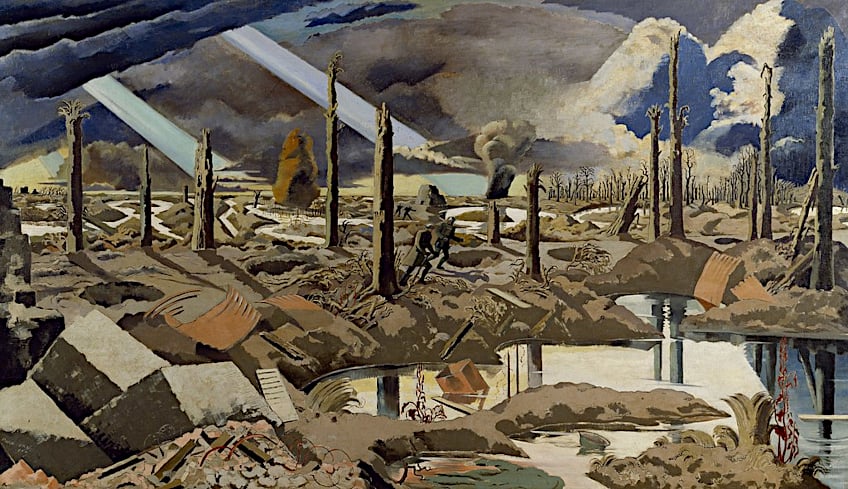
Landscapes have been an enduring subject matter throughout art history, emerging in a variety of creative styles and periods, and drawing, painting, photography, and digital art are all examples of landscape art mediums. While landscape painting is generally considered a relatively uncontroversial genre, there are examples where depictions of land have elicited surprising responses. J. H. Pierneef’s preference for painting South African landscapes completely devoid of people or signs of habitation have been critiqued as a form of declaring ownership over contested territory. While in Mexico, paintings of significant regions and landmarks became symbols of national pride imbued with political significance.
Portraits
The great thing about portraits is that there are so many different types that you can choose from, ranging from hyper-realistic to cartoonish caricatures. Realistic portraits strive for a high level of realism and detail, accurately depicting the subject’s physical characteristics. Besides the physical representation of the subject, the best artists are also able to capture a bit of the sitter’s personality and temperament.

Candid portraiture, as opposed to the more formal types of portraits, portrays the individual in a far more natural state. They attempt to convey the essence of an individual’s personality or activities in a spontaneous and unplanned manner. Self-portraits are works of art in which the creator is the subject matter.
Self-portraits have been made by artists throughout history for the purpose of self-reflection, self-expression, or as a way of documenting their development, both physically as well as artistically.
Historical
For a large part of our history, we did not have cameras, and the only way that certain events could be documented was through art. Much of art academia was based around historical art depiction too, so there is no shortage of historical art as a subject matter in art. Historical art serves to educate as well as sway our opinions.
While history paintings appear to document the events of history, this genre was also often used as a tool of propaganda, and therefore the accuracy of historical paintings can often be dubious.

However, they can still serve as a rich source of knowledge regarding the clothing and lifestyles of the people that lived at the time of the work’s creation. For centuries art played an important role in the dissemination of ideas and stories, as many people were illiterate, and art was their only means of conveying information.
Abstract
Abstract art does not try to capture visual reality as we experience it. Instead, it focuses on the use of textures, forms, shapes, lines, and colors, to create symbolic, non-representational, or simply abstract compositions. The subject matter of abstract art often originates from the creator’s own imagination, emotions, or concepts instead of explicitly referencing specific objects or settings.
Artists began to question established conceptions of representation at the beginning of the 20th century, looking for new ways of representing reality, ideas, and emotional states.
They shifted their attention away from the need to depict objects realistically in favor of the expressive power of colors, shapes, and forms. One of the distinguishing features of abstract painting is its focus on the visual parts themselves and their interactions within a composition.

Abstract artworks that inspire emotions, feelings, or intellectual reactions are often produced by artists trying out various techniques, such as layering, brushwork, and textures. The best part about abstract painting as a subject matter is that it gives you more artistic freedom and is more open to individual interpretation.
Religion
Yet another subject matter that has been around for many centuries in art is religion. Religion offers people a framework for comprehending the world and their position in it. Devotion, religious rites, and the sublime nature of religious experiences have long been conveyed through art for thousands of years. Individuals are able to connect with their religion through both making and viewing these revered religious artworks. Historically, Religious art has been used for educating individuals about religious teachings, as it portrays religious narratives visually, making them easier to comprehend and follow.
Religious art allows artists to delve into a rich tapestry of iconography and symbolism, allowing them to create meaningful creations that are also visually striking.

Mythology
Mythological stories provide painters with a wealth of inspiration. They offer an abundance of people, events, and symbolic aspects that can be incorporated into their works. Artists use myths to create impressive and thought-provoking works of art, using a variety of styles and materials to portray their interpretations of legendary themes. What are now known as myths were in fact narratives with deeply religious connotations to ancient peoples. While myths about the gods were used to explain the world at large, legend of heroes often reflected the origin stories and cultural values of specific tribes and groups.
Heroism, love, redemption, betrayal, and mortality are all common themes and facets of the human condition in mythology.

During the Renaissance, artists found inspiration in ancient texts such as The Metamorphoses, and great epic poems like the Iliad, Odyssey, Aeneid, and the Argonautica. These tales have since been used by artists to dive into the depths of relationships, human emotions, and challenges. Mythological art often acts as a mirror, reflecting humanity’s accomplishments, weaknesses, and aspirations while offering insights into our shared humanity. They often include archetypes, which are mythological figures and themes that symbolize the fundamental traits of the human mind and psyche.
The Historical Development of Subject Matter in Art
Over the millennia, humans have adapted the subject matter of their artworks to better suit the time in which they were created. What was important to us in the prehistoric age has changed significantly in the ultra-modernized era. Let us investigate how subject matter in art has evolved throughout human history.
Subject Matter in Prehistoric Art
Because prehistoric art spans a wide range of time and traditions, the subject matter can vary greatly from one region to another and across different eras. However, there are still a few common features that can be observed throughout these distinct eras. Handprints, abstract designs and animals were popular themes in prehistoric art.

Animals like horses, bison, deer, birds, and extinct species like mammoths are often depicted in cave paintings, rock carvings, and portable artworks. These animal images may have served a practical function, such as recording key hunting scenes, or they could have carried some sort of symbolic or even spiritual significance.
The location of many of these images deep within caves where they could only be reached with much danger and difficulty has also led some scholars to speculate that they may have served as part of shamanistic rituals.
Subject Matter in Ancient Art
Artists from this period created magnificent sculptures, reliefs, and paintings to portray gods and culture heroes that depicted either their localized attributes or events drawn from narratives associated with them. Monarchs and rulers were also common subject matter in ancient art. They portrayed monarchs in various scenarios indicative of their status and suggesting their divine connections. Important events such as wars and victories were also often represented in ancient art.
Ancient art also offers insights into ancient civilizations’ daily lives and social activities. These pieces of art represent scenes from ordinary life like hunting, farming, fishing, dining, dancing, and other daily activities.

Sacred and civic architecture was also very important in ancient art. Ancient civilizations achieved incredible feats in the creation of enormous temples and tombs. Frescoes and reliefs discovered within these structures often portrayed religious images, historical events, or mythical narratives. Ancient art spans many cultures, including Greek, Roman, Egyptian, Mesopotamian, Mayan, and Indus Valley, among many others. Each civilization’s traditions, subject matter, and aesthetic choices were distinct.
Subject Matter in Renaissance Art
As a result of the renewed interest in ancient Greece and Rome, artists from the Renaissance era often used mythology and classical topics as their preferred subject matter. With the rise of Humanism, art also provided an outlet for philosophical, cultural, and scientific exploration. New concepts such as mathematical formulae to create illusions of three-dimensional space on a two-dimensional plane allowed artists to introduce greater spatiality and naturalism into their art.

Portraiture arose as a result of Renaissance art’s increased attention on individuals. Artists expertly captured the likeness and personality of their subjects, who included affluent patrons, political figures, and royalty.
Portraits exhibited the sitter’s riches, rank, and intelligence, as well as an insight into their character and inner lives. Historical events and metaphorical situations were also often represented by Renaissance painters. Historical paintings illustrated key historical events, conflicts, or moments, whereas allegorical artworks used symbols to express various philosophical, moral, or political ideals.
Subject Matter in Baroque Art
Baroque art continued to feature religious and biblical tales, demonstrating the Catholic Church’s dominance throughout this time period. These works attempted to emotionally captivate viewers by depicting extreme moments of religious zeal, divine intervention, and martyrdom.
To create a feeling of spiritual drama, artists from this period employed vivid contrasts of light and shadow, dynamic compositions, and dramatic postures.

Landscapes in the Baroque period gained popularity as painters sought to delve deeper into the natural world. To elicit emotional responses from audiences, these settings typically included dramatic lighting, rocky terrains, and atmospheric effects. The landscapes were painted as independent pieces or as settings for religious or mythical storylines, conveying nature’s magnificent power and beauty.
Subject Matter in Romanticism Art
The creepy, macabre, and enigmatic were all popular themes throughout the Romantic period, and the supernatural, visions, dreams, and the occult were all explored by the artists. They represented haunting ruins, scary landscapes, and ghostly figures, reflecting a concern with the darkest parts of the human mind and the unknown.
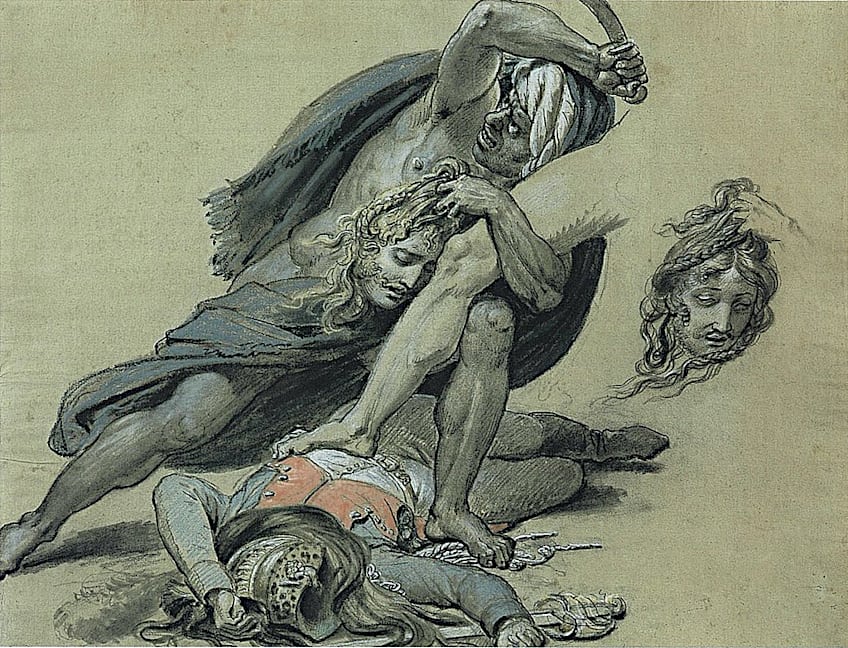
Romantic painters also emphasized the value of the individual and the strength of the human imagination during the Romanticism period.
Artists and intellectuals were portrayed as heroic characters who had the ability to influence the world through their independent thinking. Individuals were shown in artworks conveying their inner ideas and wishes, questioning established societal norms, and celebrating personal independence.
Subject Matter in Impressionism Art
Impressionist painters concentrated on capturing images from ordinary life, attempting to capture the spirit of a moment instead of precise reproduction. Landscapes and nature were especially appealing to Impressionist artists. They portrayed a variety of outdoor landscapes, including meadows, gardens, rivers, and seascapes.
These landscapes highlighted the impact of shifting lighting and weather conditions, capturing the interplay of sunshine, shadows, and ambient subtleties.
Themes of leisure and recreation were also often depicted in Impressionist artworks. Picnics, boating, wandering through parks, watching concerts, or enjoying outdoor events were all represented by artists of this era. The goal of these paintings was to portray the carefree and joyful moments of ordinary everyday living.

Subject Matter in Modern Art
Modern art typically addressed the political and social issues of the time, expressing the contemporary world’s upheavals and transitions. Artists’ art was used to criticize power dynamics, inequality, war, and the effects of urbanization and industrialization. Modern art depicted the human condition in a fast-changing world as its subject matter.
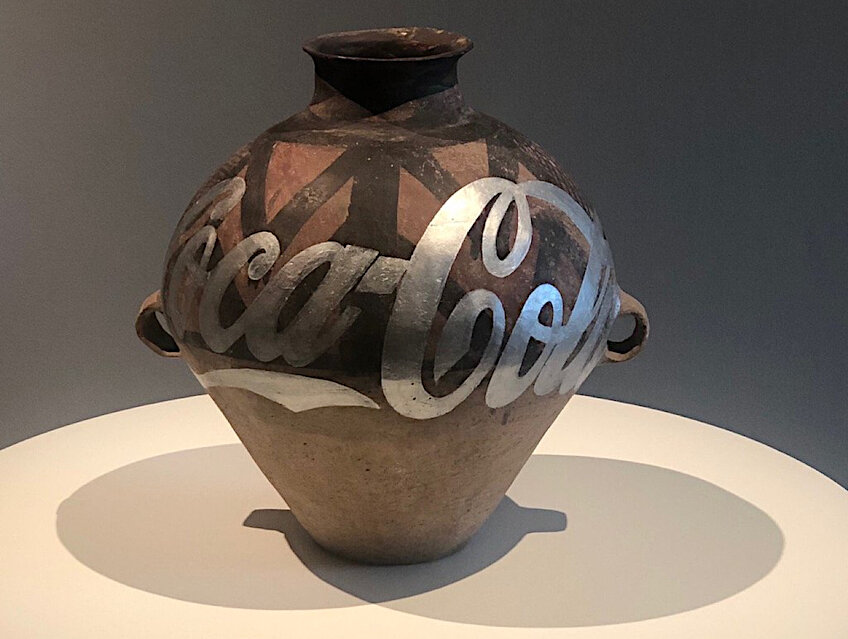
With the growth of mass media and consumer society in the 20th century, contemporary artists started infusing popular cultural aspects into their pieces of art. They were inspired by commercials, celebrities, and comic books. Pop art, for instance, glorified mass-produced graphics and consumer commodities, blending both high and low art. Modern art’s subject matter is immensely diversified, reflecting the wide range of creative movements and the openness for experimentation that evolved during this time period.
Contemporary artists pushed the frontiers of art, questioned old views of what constitutes art, and embraced new subject matter that represented the complexities of the contemporary world as well as their own aesthetic ideals.
Subject Matter and Art Criticism
The subject matter is an important starting point for interpreting, analyzing, and assessing artworks in art criticism. The subject matter of an artwork offers vital contextual information about it, aiding viewers in understanding the social, cultural, historical, and personal environments in which it was made.
Art critics are able to gain knowledge of the artist’s motives, influences, and larger cultural or aesthetic trends that may have inspired the piece of art by evaluating the subject matter.
Analyzing the subject helps art critics to dive into the artwork’s fundamental concepts, symbols, and intended meanings. Art critics can examine how efficiently the artist’s artistic choices and skills connect with their desired aesthetic impression by studying the subject matter. Art critics can connect with artwork on numerous levels by evaluating the relevance of the subject matter and improving their appreciation and respect for the artist’s artistic approach.
Recommended Reading
If you’re an art lover, then learning the various intricacies of how artists use visual elements to convey ideas and emotions will greatly enhance your ability to interpret art and broaden your horizons.
If you’re an artist, then gaining insight into the wide range of methods that artists have used to express themselves, will take your own art to a whole new level.
Fortunately there are some excellent books out there that demonstrate exactly how to go about decoding a work of art. Below are some of our favorites.
What Great Paintings Say. 100 Masterpieces in Detail (2016) by Rainer and Rose-Marie Hagen
Few books on art provide as much background information on such a range of artworks as those created by Rose-Marie and Rainer Hagen. Following their first publication of this kind in 1995, they have since produced multiple books that explore the themes, subject matter, and cultural and historical background of hundreds of the world’s greatest artworks. Books in this series include What Great Paintings Say. Italian Renaissance and What Great Paintings Say. Beautiful Nudes.
- Comprehensive guide to the historical contexts of artworks
- Full-color illustrations with close-up details of artworks
- Large, heavy, and expensive, but an absolute must-have
The Secrets of Art: Uncovering the Mysteries and Messages of Great Works of Art (2021) by Debra N. Mancoff
Art-Detective Debra N. Mancoff uses her years of expertise to reveal the depth of understanding that combining the latest scientific research, historical insight, and relentless research can provide into artworks. The surprising discoveries she discloses may be based on fact, but are as captivating as the best fiction, and guaranteed to change the way you look at and think about these artworks. If your interest in art extends beyond the surface, then you have to own this book.
- Fascinating insight into how each artwork featured was created
- Combines latest scientific and historical research into art
- Expert insider knowledge ideal for artists and enthusiasts alike
What Great Artworks Say: Interpreting Masterpieces of Art (2022) by Christopher P. Jones
Christopher P. Jones combines his skill as a writer with over two decades of experience in art critique to produce books that takes the reader on an exciting adventure into the various mental processes that lie behind the creation of some of the world’s most compelling artworks. The books are small and lightweight enough to carry around with you, while still boasting beautiful full-color reproductions of the artworks he discusses. The other books in this series include Great Paintings Explained and How to Read Paintings.
- Highly informative and easy-to-read guide to interpreting art
- Each of the 15 artworks featured is illustrated in full color
- Ideal affordable and portable guide-book for museum visits
“What is subject matter in art?”, appears self-explanatory at first look, yet there may be more than one way to respond to that question. Is the subject matter as the observer perceives it or as the artist asserts? In art, the subject matter pertains to the message that the artist wishes to convey to their viewers. It might be an opinion, a feeling, or something that is tangible. It could potentially be either representational or abstract in nature too. Over the years, the subject matter in art has changed significantly along with our own development as a species.
Frequently Asked Questions
What Are Popular Types of Subject Matter in Art?
Art has existed for an extremely long time and throughout the different eras, it has come to favor different subjects, based in the cultural role of art. Where art forms part of religious rituals and sacred environments, religious themes tend to predominate. Historically, the development of audiences for art who valued and were capable of buying art saw an expansion of subject matter into more secular themes, such as still life, landscape, and genre scenes. Portraiture is another subject that has been around for centuries. Thankfully, this type of subject matter can teach us much about how people looked and dressed in their time, as well as how they viewed themselves. History painting has long served to convey nationalistic ideals, while mythological subjects were very popular for many centuries but have become less prominent in modern times.
Does All Art Have a Subject Matter?
While the subject matter of a piece is a prevalent feature in many artworks, especially those depicting familiar objects, situations, or ideas, there are types of art that highlight other qualities or pursue non-representational techniques. Some types of art, such as abstract art, may not have a typical subject matter. The artists of these works instead tend to focus on other characteristics like form, texture, color, line, or the relationship between forms and compositions. Instead of conveying specific themes or tales, in this types of art the artist’s and viewer’s aesthetic experience, and conceptual and/or emotional reaction is the artwork’s subject matter.
Isabella studied at the University of Cape Town in South Africa and graduated with a Bachelor of Arts majoring in English Literature & Language and Psychology. Throughout her undergraduate years, she took Art History as an additional subject and absolutely loved it. Building on from her art history knowledge that began in high school, art has always been a particular area of fascination for her. From learning about artworks previously unknown to her, or sharpening her existing understanding of specific works, the ability to continue learning within this interesting sphere excites her greatly.
Her focal points of interest in art history encompass profiling specific artists and art movements, as it is these areas where she is able to really dig deep into the rich narrative of the art world. Additionally, she particularly enjoys exploring the different artistic styles of the 20th century, as well as the important impact that female artists have had on the development of art history.
Learn more about Isabella Meyer and the Art in Context Team.
Cite this Article
Isabella, Meyer, “Subject Matter in Art – A Guide to Decoding an Artwork.” Art in Context. July 10, 2023. URL: https://artincontext.org/subject-matter-in-art/
Meyer, I. (2023, 10 July). Subject Matter in Art – A Guide to Decoding an Artwork. Art in Context. https://artincontext.org/subject-matter-in-art/
Meyer, Isabella. “Subject Matter in Art – A Guide to Decoding an Artwork.” Art in Context, July 10, 2023. https://artincontext.org/subject-matter-in-art/.











